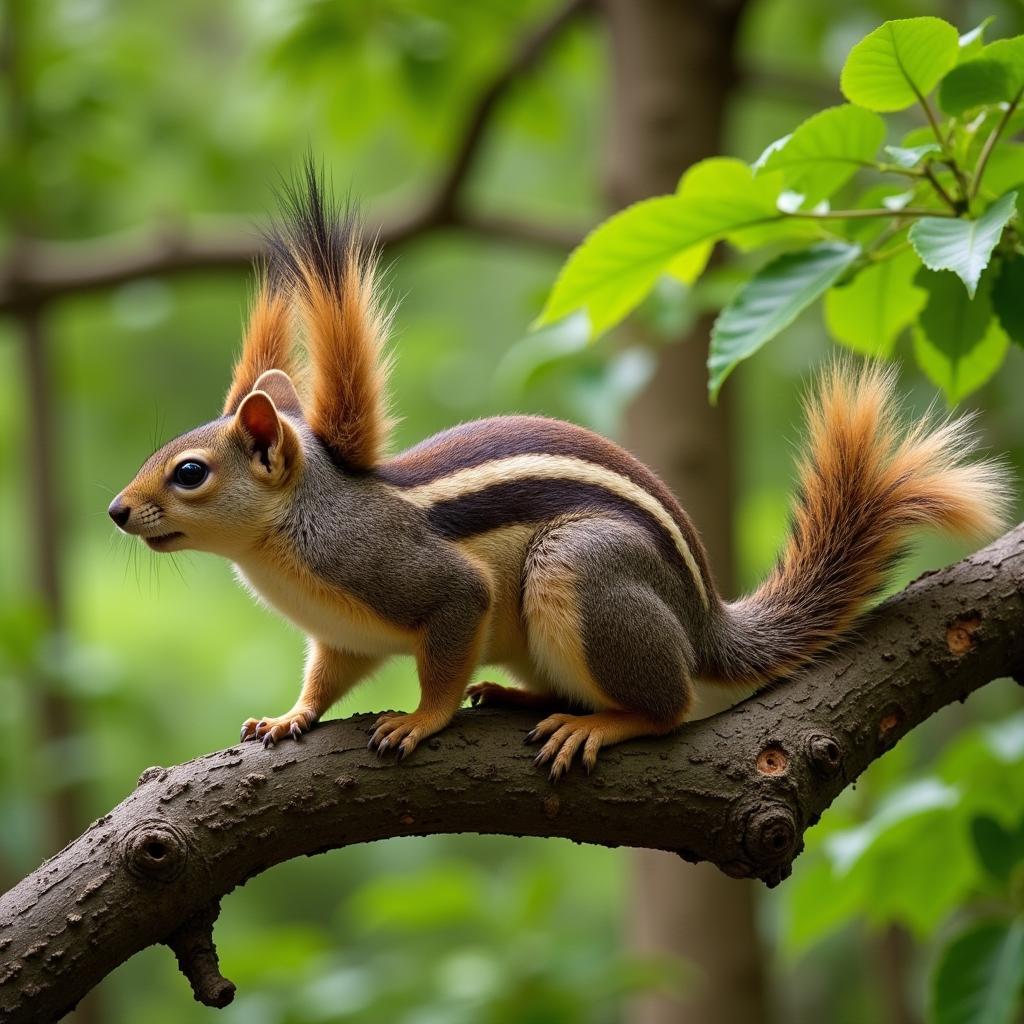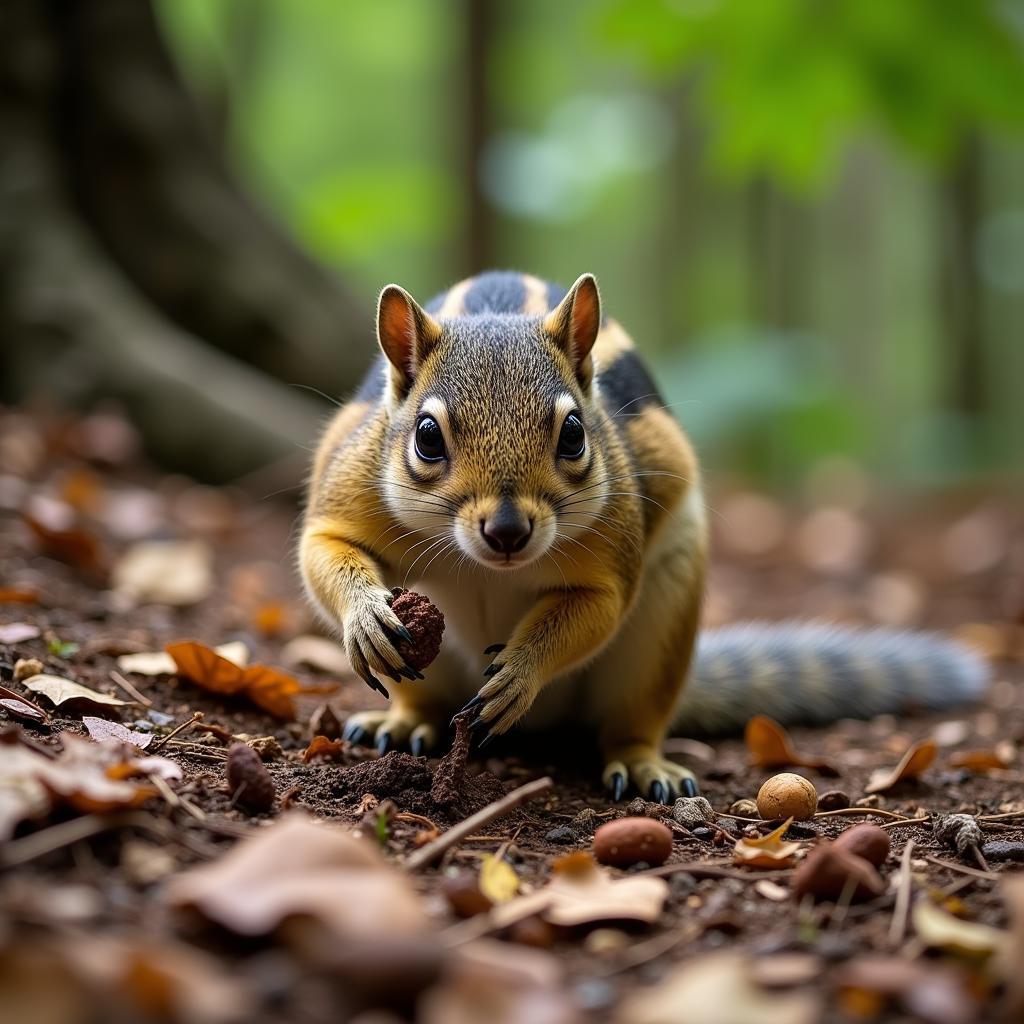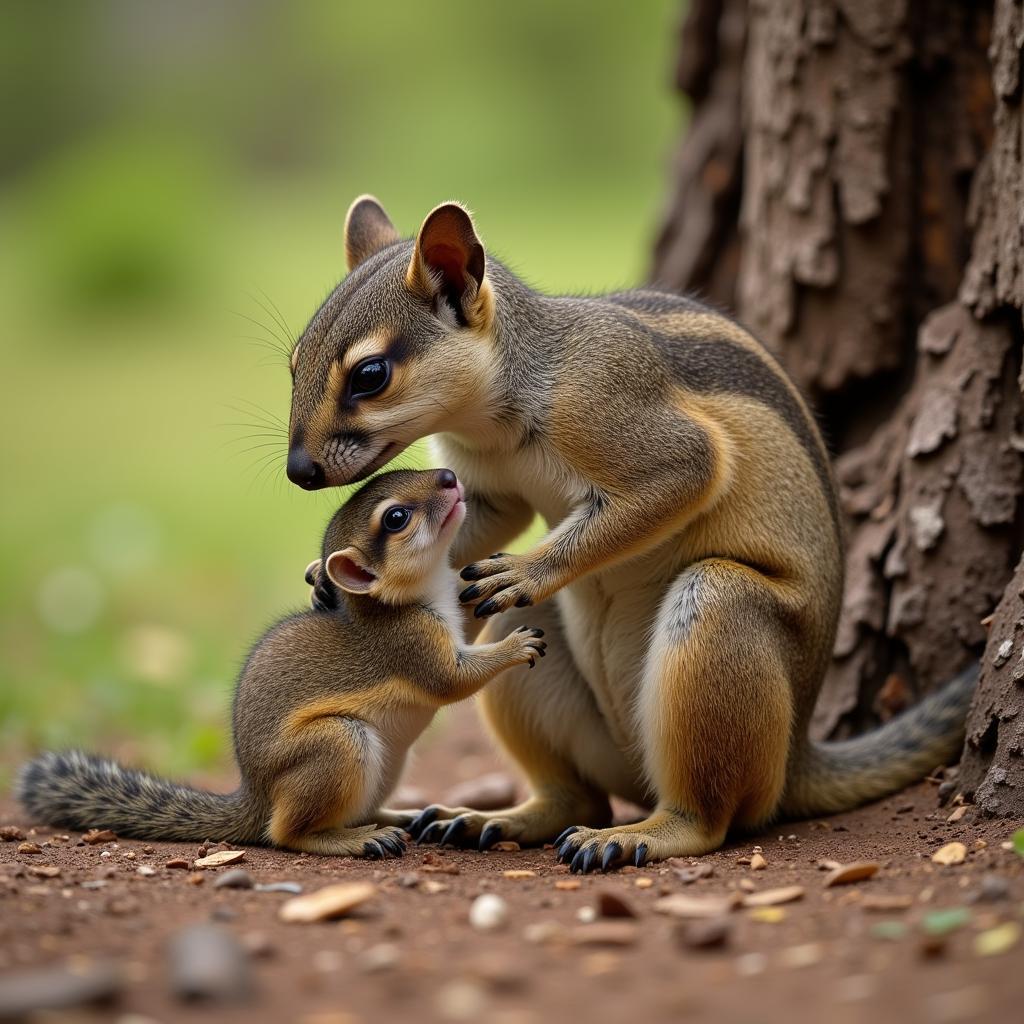The African Bush Squirrel: A Charming and Adaptable Creature
The African Bush Squirrel, a small and agile rodent, is a common sight across sub-Saharan Africa. Known for its distinctive bushy tail and quick movements, this fascinating creature plays a vital role in the ecosystem and offers a glimpse into the continent’s rich biodiversity.
Habitat and Distribution of the African Bush Squirrel
 African bush squirrel perched on a tree branch
African bush squirrel perched on a tree branch
African bush squirrels are highly adaptable and can be found in a variety of habitats, from woodlands and savannas to gardens and parks. They are particularly fond of areas with trees, which provide them with shelter, food, and vantage points to survey their surroundings. Their distribution spans across sub-Saharan Africa, with different species occupying specific regions.
Physical Characteristics and Diet
African bush squirrels typically measure between 35 to 50 centimeters in length, including their impressive tails, which can be as long as their bodies. Their fur color varies depending on the species and region, ranging from reddish-brown to gray or black. The underside is generally lighter, and some species sport stripes or spots.
These omnivorous creatures have a diet that consists primarily of seeds, nuts, fruits, and insects. They play a crucial role in seed dispersal, burying nuts and seeds for later consumption, often forgetting about some, which then germinate and contribute to the growth of new trees and plants.
Behavior and Social Structure
 African bush squirrel searching for food on the ground
African bush squirrel searching for food on the ground
African bush squirrels are diurnal animals, meaning they are most active during the day. They are highly agile climbers and often scurry up trees to escape predators or to access food sources. On the ground, they move with swift, darting movements, their bushy tails held high as a counterbalance.
While they are generally solitary creatures, African bush squirrels communicate with each other through a series of chirps, whistles, and tail movements. These vocalizations serve to warn others of danger, attract mates, or defend their territory.
Importance to the Ecosystem and Human Interaction
As seed dispersers, African bush squirrels play a crucial role in maintaining the health and diversity of their ecosystems. Their foraging activities contribute to the regeneration of forests and woodlands.
In some areas, African bush squirrels are considered agricultural pests due to their tendency to raid crops. However, they also provide benefits by consuming insects that may damage crops.
“African bush squirrels are a fascinating example of how a small creature can have a significant impact on its environment,” says Dr. Abena Owusu, a wildlife biologist specializing in African rodents. “Their adaptability and resourcefulness make them key players in the intricate web of life.”
Conservation Status and Threats
 Mother African bush squirrel with her offspring
Mother African bush squirrel with her offspring
Most African bush squirrel species have a stable population and are not currently considered threatened. However, habitat loss due to deforestation and agricultural expansion poses a significant threat to some populations.
Conclusion
The African bush squirrel, with its charming antics and ecological importance, offers a captivating window into the wonders of African wildlife. Understanding and appreciating these creatures is crucial for fostering a sense of responsibility towards their conservation and the preservation of their habitats.

